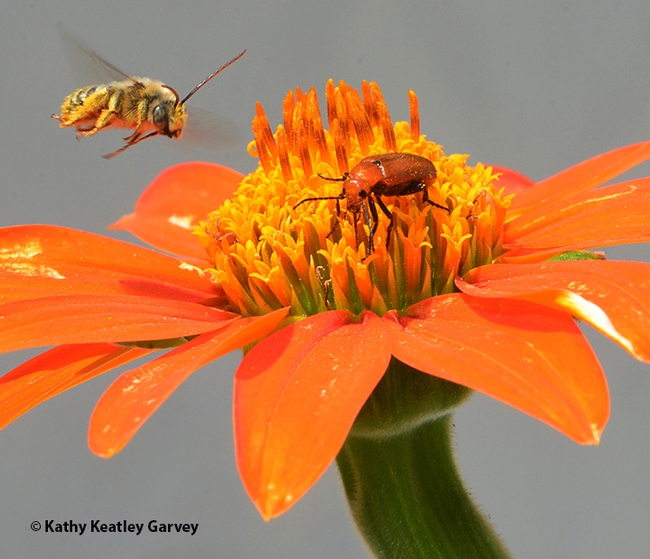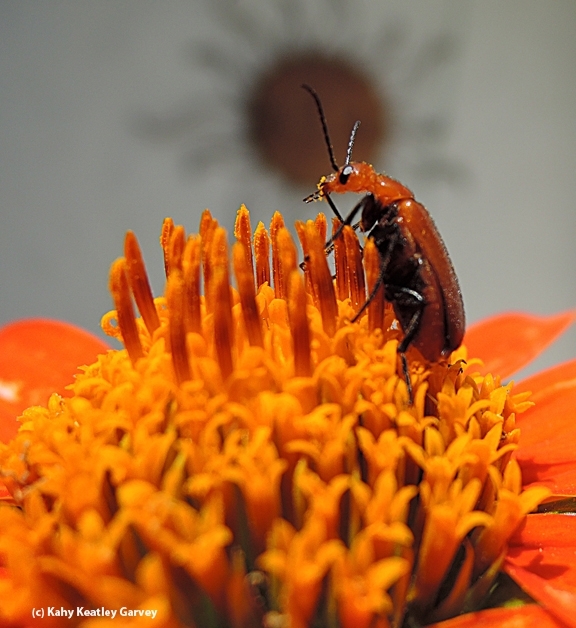If you're feeling overwhelmed during the holiday season and just can't seem to concentrate, check out the focus and intensity of this male territorial bee, a Melissodes agilis.
It was back in July of 2015 when I spotted a meloid beetle on a Mexican sunflower, Tithonia rotundifola, in a Vacaville pollinator garden.
The Melissodes did, too.
Now the meloid beetle is a blister beetle (family Meloidae). Don't touch these beetles because they emit a poisonous chemical, cantharidin, that can blister your skin. It makes for great defense. Touch me, and I'll blister your skin. No wonder the chemical is used to remove warts.
Blister beetles are also known to infest alfalfa hay, and are toxic--even deadly--to livestock. See "Blister Beetles" published by the Montana Agricultural Experiment Station.
"Cantharidin, a vesicant produced by beetles in the order Coleoptera, has a long history in both folk and traditional medicine...Historically, cantharidin has been used as an aphrodisiac, an abortifacient, and a veterinary medicine diuretic." --Cantharidin Revisited, JAMA Dermatology.
So here's this bee targeting the beetle. Oh, the intensity of those eyes...much like a last-minute shopper eyeing a 50 percent-off gift, the last in stock, and ignoring the attempts of last-minute shoppers to grab it.
Did the beetle move?
Not a bit. It rose and ate some of the pollen that the bee was trying to save for its own species.
Attached Images:

